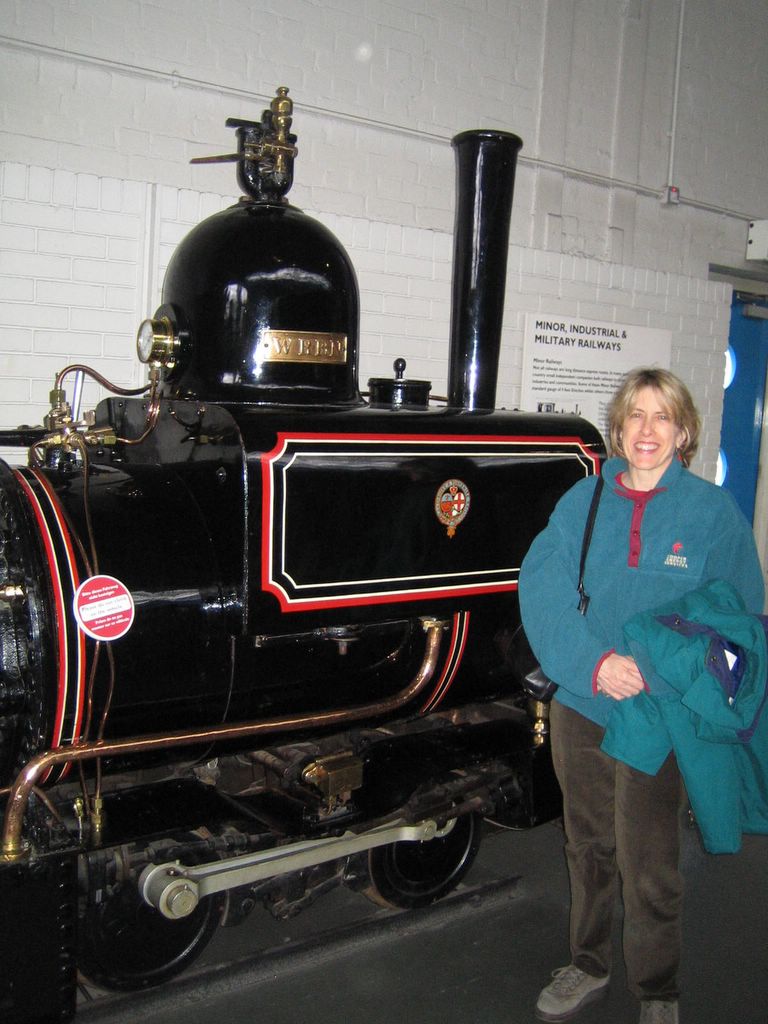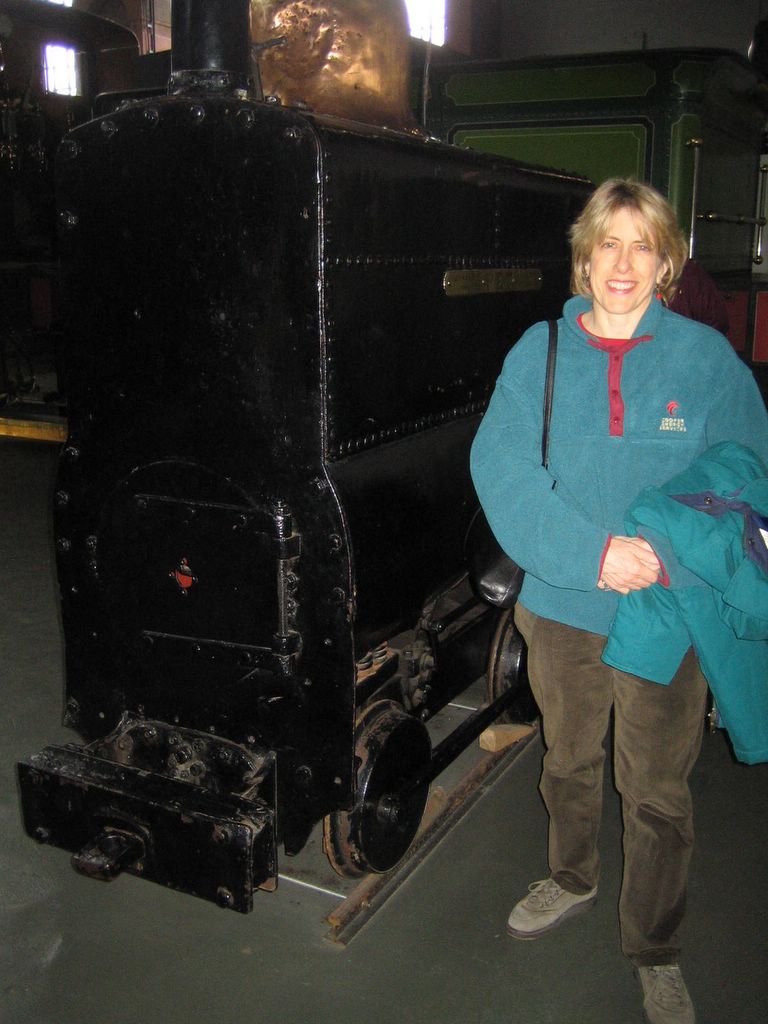
Early locomotives were like today's tractors. We can have huge ones in the wheat fields or tiny ones to work in our yards. Here's a couple narrow gauge engines. Fortunately, we brought along a 5'2" model to lend perspective to these photos.
Above is the Wren, one of eight saddle-tank locomotives built at Horwich around 1887 for the Lancashire and Yorkshire Railway. It ran on an 18" gauge (The standard is 4'8 1/2") around the rail yard until 1957. The saddle tank rests on top, providing a larger water supply, but making the engine unstable at high speeds -- not a problem for a yard engine. Many industrial sites had narrow gauge track and working engines, not unlike our use of fork lift trucks today.
Narrow gauge lines started to carry farm or mining products to the main railroad lines. Later they became popular on rich men's estates or as novelty passenger lines in tourist areas. Many of them were 15" -- the smallest gauge that can be operated safely.

Here's another one of the industrial narrow-gauge workhorses (on the left). The workhorse on the right uses diet and exercise to keep her narrow gauge.